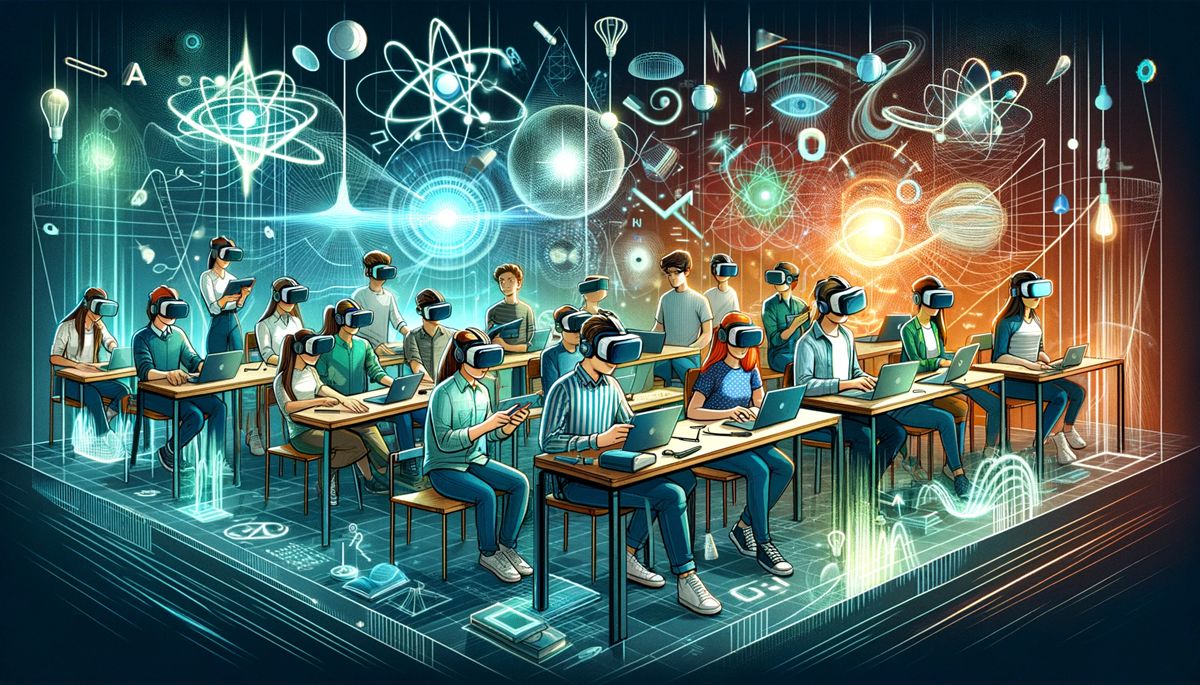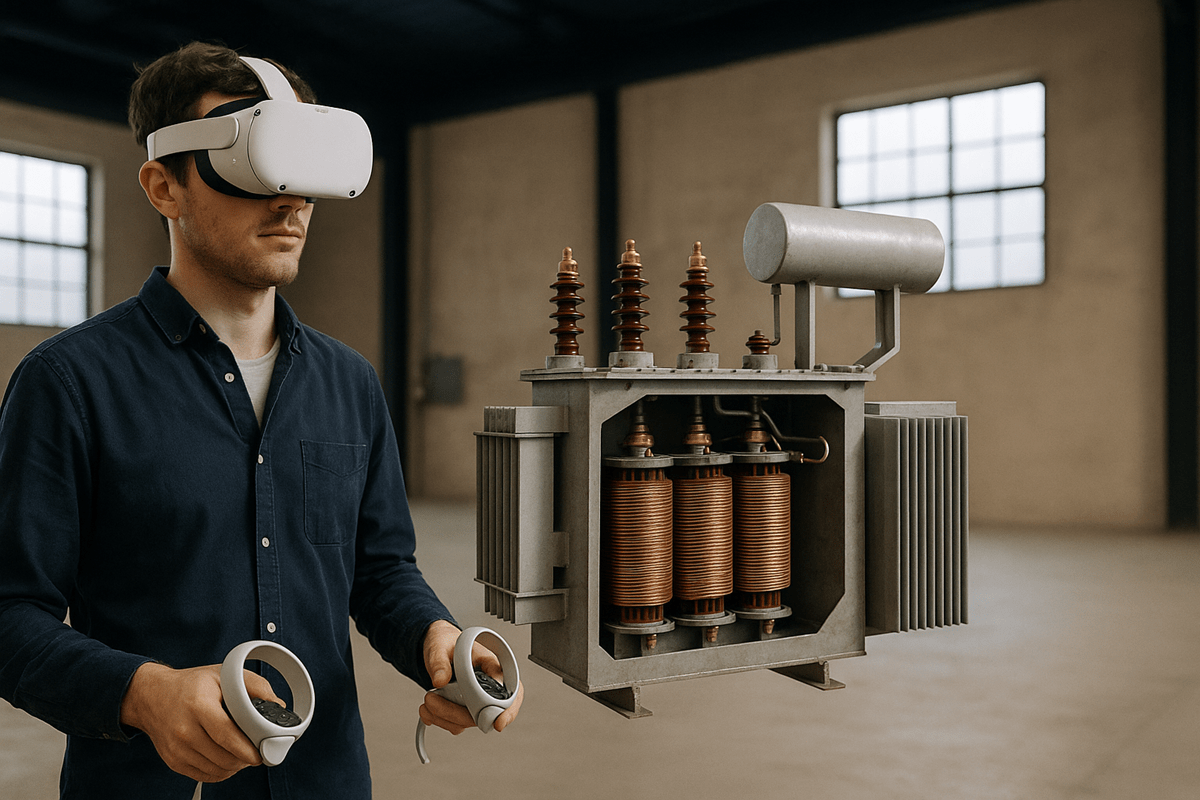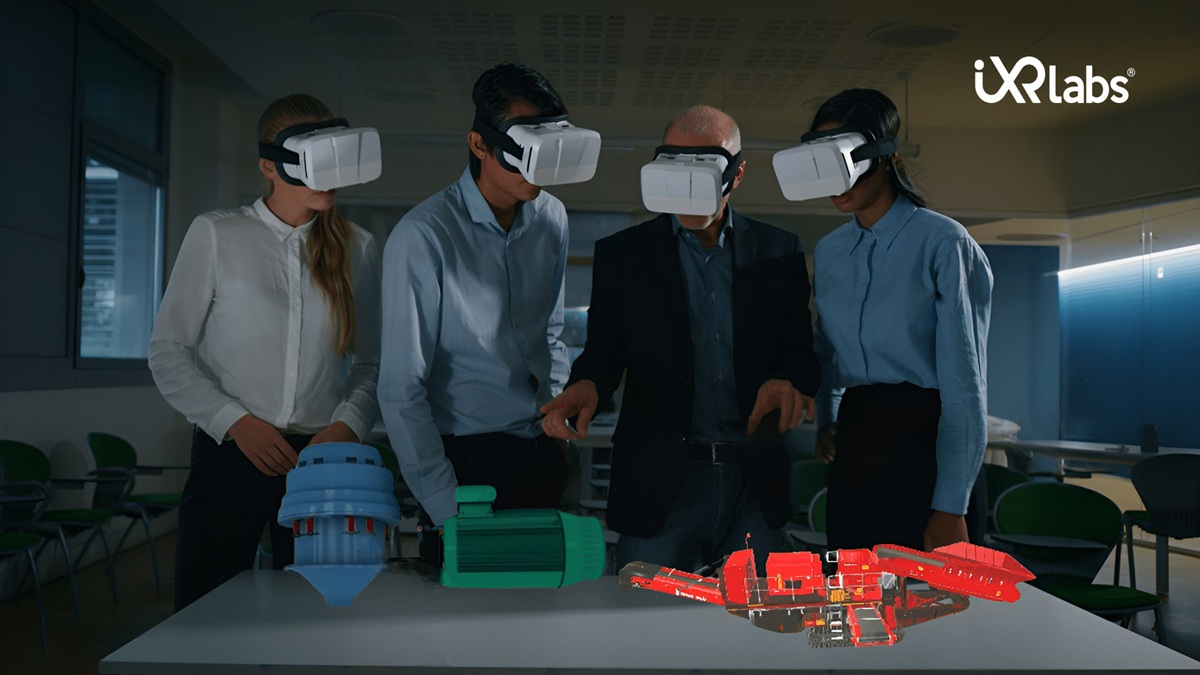Revolutionizing Electromagnetic Education with VR Technology

Today’s college electromagnetic courses rely strongly on advanced calculus, which is good for quantitative analysis of electromagnetic problems.
Though, it does little to offer students with an intuitive and comprehensive understanding of electromagnetics.
Unfortunately, this lack of engagement often leads students to lose interest in the concept of electromagnetics shortly after finishing the course.
However, unlike rigid-body objects, we cannot interact with the electromagnetic field in our daily lives. In simpler terms, understanding the electromagnetic field is difficult because we cannot perceive it directly.
At present, on-going experiments in electromagnetic courses can only use the device to present the invisible electromagnetic field into data or graphs.
But, there are still numerous unaddressed challenges for teaching engineering education with technologies.
Challenges and Solutions in Teaching Electromagnetic Education
✔️ Challenge 1: No Application Available to Visualize the “Field Lines”
The present solution in creating an intuitive connection to real-world phenomena and electromagnetic concepts only presents the magnetic induction and electric field lines, which students and users cannot interact with.
Besides, with the rise of COVID-19, labs were performed online. As a result, there is a strong requirement for students to do interactable electromagnetism and wave polarization experiments in the virtual world.
Solution:
To solve this challenge, using VR for electromagnetic education is the best approach to visualize electromagnetics and waves in the virtual world.
Students can integrate controllers to create new charged objects of various shapes and observe their impact on the electromagnetic field as they move and rotate these objects using controllers.
For waves, users can create non-polarized, polarized, and circularly polarized waves, observing how they pass through specific polarizers and transform into other types.
However, calculating the field around charged objects and connecting these positions with continuous lines involves complicated computations.
And, if the sole dependency is on the CPU for these calculations, the only visualization possible will be for the magnetic field around two charged wires without experiencing delays.
But, to provide students with a more intuitive understanding of electromagnetics and polarized waves, use VR to teach engineering through modern tech.
✔️ Challenge 2: Difficult in Understanding Fleming’s Rule
Students encounter challenges comprehending Fleming's rule,because of its several intangible theories like current, resistance, voltage, magnetic field lines, electromagnetic induction and magnetic force.
And unfortunately, there is no practical experiment available in the physics lab to aid their understanding.
Moreover, students face problems in understanding Fleming's right hand and left-hand concept as there are insufficient studies related to the concepts of electromagnetics.
Solution:
A recent research evaluated the effectiveness of a VR-based application compared to a web-based approach for teaching electromagnetism, specifically focusing on Fleming's rule and its applications like electric motors and generators.
Besides, the VR for electromagnetic education creates a learning environment using Unity 3D software, seamlessly integrating 3D objects and markers .
Given that the functioning of electric motors and generators is grounded in the principles of Fleming's rule, a virtual environment was conducted, using the example of Fleming's rule and its practical applications.
In this manner, it becomes easy to understand the concept of Fleming’s rule and visualize the working of its applications.
"Join the Electromagnetic Revolution with VR - Learn How to Harness the Power of Virtual Reality to Enhance Your Understanding of Electromagnetic Concepts and Prepare for a Brighter Future!"
✔️ Challenge 3: No Practical Experience of Electromagnetism
Students often face challenges in comprehending the concept of electromagnetism, as present models provide real-time depictions of magnets.
However, these models lack interactive features that present the interaction with magnets and magnetic field lines, the demonstration of forces acting on an object positioned between two magnets, and the depiction of the direction of current flow.
This is a problem for effectively teaching students about electromagnetism.
Solution:
Unquestionably, the crucial aspect of understanding electromagnetism involves visualizing and interacting with magnetic fields generated by electrically charged objects.
However, in traditional setups, observing real-time magnetic field lines and the flow of electric current in a conductor within the magnetic field is challenging.
However, by implementing a VR adventure in electromagnetic engineering, using computer-generated magnets to dynamically showcase magnetic field lines in an immersive environment, provides an interactive learning experience.
Through Virtual reality, you have the flexibility to modify the magnetic field's intensity, observe changes in field lines based on varying distances between magnets, and witness the impact on the rotating speed of a conductor within the magnetic field.
This innovative approach allows students to better grasp the effects of magnetic fields on electric currents, including the direction of force exerted on the conductor and the overall interaction between field lines, current, and conductor.
In totality, the integration of VR for electromagnetic education extends beyond the limitations of physical setups, enabling a more comprehensive understanding of electromagnetism.
The Takeaway:
The integration of VR in electrical engineering has emerged as a groundbreaking solution for revolutionizing electromagnetic education.
Moreover, decision-makers in the education segment are recognizing the transformative impact of VR on enhancing student engagement and comprehension of complex electromagnetic concepts.
So, by investing in VR-based educational tools make sure that you stay at the forefront of technological advancements, nurturing a dynamic and effective learning environment.
Plus, embracing VR in electromagnetic education not just prepares students for real-world implications but also empowers them with a deeper and more intuitive understanding of electromagnetic principles, eventually shaping the future of education.
Forge the future of engineering education! Click now to lead the transformation with cutting-edge VR technology. After all, your today's decision shapes the innovators of tomorrow!



.png)

.png)